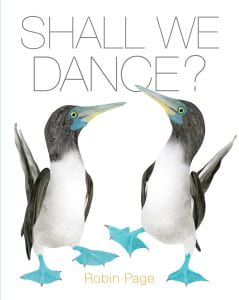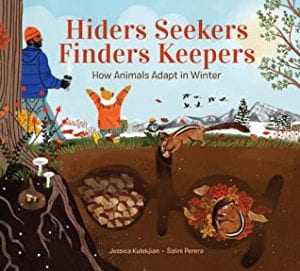 Stewart, Melissa. Thank You, Moon: Celebrating Nature’s Nightlight. Illustrated by Jessica Lanan. Alfred A. Knopf, 2023. 978-0-593-43507-6. 40 p. 18.99. Grades K-3.
Stewart, Melissa. Thank You, Moon: Celebrating Nature’s Nightlight. Illustrated by Jessica Lanan. Alfred A. Knopf, 2023. 978-0-593-43507-6. 40 p. 18.99. Grades K-3.
This homage to the moon is part poem, part science text. Lyrical lines honor the moon’s constant presence in the night sky and highlight the many ways it benefits life on planet Earth. The moon’s gravity keeps Earth stable, and its light helps all kinds of nocturnal animals thrive. Baby leatherback turtles use the moon’s bright light to crawl towards the ocean, while prides of lions take advantage of a waning crescent moon’s sliver to creep up on unsuspecting prey. Watercolor and colored pencil illustrations in dusky blues, greens, and purples showcase several of nature’s nocturnal creatures under the luminous moonlit sky. Backmatter includes information about how the moon lights up the night sky and descriptions and diagrams of the phases of the moon. The scientific name, size, habitat, range, diet, predators, lifespan, and field notes about each featured animal are also included.
THOUGHTS: This informative title describes the ways animals adapt their nighttime behaviors to match the way the moon cycles through the sky. Students will be fascinated by the ways different animals behave based on the amount of light that appears each evening. This will be a good addition to STEM collections for the youngest readers and for units about nocturnal animals.
591.5 Animal Behavior



